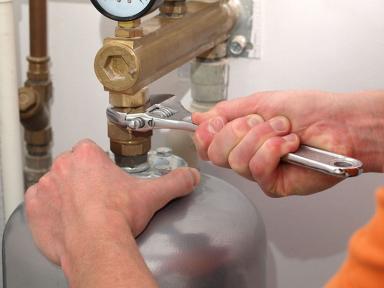Open vented systems v sealed heating systems

What is a the difference between a sealed and an open vented heating system? Should I retain my open vented boiler?
Central heating systems are either ‘open vented’ or ‘sealed’ systems. (NB not to be confused with vented and unvented hot water tanks, which are explained in our Guide to Hot Water Cylinders.) Many homes in the UK still have an open vented heating system and in some cases they are the better option for your home. If you wish to retain your open vented system you will have to stick with a heat only boiler. All other boilers must work on a sealed system. We explain the advantages and disadvantages of each system and give guidance on when the circumstances are right to change.
Open vented systems explained
Open vented systems comprise a Feed and Expansion (F&E) tank located at the highest point in the system. They work exclusively with heat only (also known as ‘regular’) boilers. (NB regular boilers can also work with sealed systems.)
When water is heated it expands. An F&E tank will take up the increased volume of water in the system from expansion. As the system cools, the F&E tank ‘feeds’ water back into the system.
The ‘open vent’ is a pipe which rises from the heating system to above the tank and hooks over into it. The open vent pipe is a safety mechanism which will release excess pressure in the system in the event of an over-heat fault situation.
When water is lost from the system, which occurs naturally via evaporation, a supply pipe and float valve will regulate an amount of fresh water back into the system.
This is the traditional set up for a central heating system and was found in the vast majority of homes until the introduction of the modern combi in the 1980s.
Open vented systems are still operating in many homes across the UK today and in some cases remain a more suitable set up.
Advantages to retaining an open vented system:
- They comprise very few fittings and devices to operate, compared to a sealed systems, which means lower maintenance costs
- Where older radiators are present, that are not to be replaced, changing to a sealed system can put it under pressure and cause leaks
- It is much to cheaper to swap the boiler and leave all other components in place
Disadvantages to retaining an open vented system:
- You can only have a Heat Only boiler, as they cannot work with Combi and System boilers
- Debris can enter the system via the F&E tanks
- Less efficient as there is greater potential for heat loss via the F&E tanks
Sealed systems explained
In place of an F&E tank, a sealed system comprises an expansion vessel into which system water can expand as the water heats. As the system cools, this pressurised vessel pushes water back into the system.
In place of the open vent pipe, a pressure relief valve (which remains closed under normal operating conditions) opens in the event of an over pressure fault to let surplus water out. There is no float valve to automatically feed water back into the system, instead water must be manually replenished via a ‘filling loop’.
A filling loop connects the system pipework to the mains water pipework. It makes a temporary connection when turned on to fill the system with mains water. A pressure gauge guides users when refilling.
Advantages to moving to a sealed system:
- Greater flexibility in siting the boiler and other system components
- Options to change to a Combi or System boiler set up
- Can free up space in the roof space
- It keeps the system cleaner at its sealed off. Debris can enter the system via F&E tanks
- More efficient as there is less potential for heat loss, e.g. evaporation via the F&E tank.
Disadvantages to a sealed system
- May cause leaks in old radiator systems and buried pipework
- More components to go wrong, although for combi and system boilers the components that are integral to the boiler, which will be most of them, will be covered by the manufacturer’s warranty.
When to retain an open vented system
- When there are older radiators that could leak under pressure
- Where there are pipes buried in screed that may also leak under pressure
- You are on a tight budget
- If you are happy with your heat-only boiler
When to seek expert help
An expert installer will be able to judge whether to retain your existing open vented system or whether the circumstances are right to move to a sealed system.
If you need some independent advice for your new boiler, you can use our Hero Support service. We will specify the right boiler and put you in touch with an expert installer who has reached the level of technical competency necessary to be in the top 1% of all UK installers. Our Elite Installers fully understand correct heating system design and work with us to specify and fit boilers and heating systems that run at their higher efficiencies.
More reads...
Combi v system boiler
For big hot water requirements a system boiler may be more suitable. We guide you here.
Guide to central heating costs
How much does a central heating system cost to fit? We guide you here.

